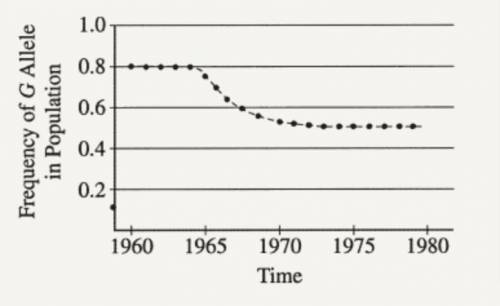
Biology, 19.04.2021 04:10 gabbypittman20
A moth's color is controlled by two alleles, G and g, at a single locus. G (gray) is dominant to g (white). A large population of moths was studied, and the frequency of the G allele in the population over time was documented, as shown in the figure below. In 1980 a random sample of 2,000 pupae was collected and moths were allowed to emerge. Assuming that the population was in Hardy-Weinberg equilibrium for the G locus, what percentage of the gray moths that emerged in 1980 was heterozygous? (The Answer is 67%, can you please explain why it's 67%? thank you!!)


Answers: 3


Another question on Biology

Biology, 21.06.2019 17:00
What is produced during the krebs cycle? co2, atp, nadh, and fadh2 pyruvate, co2, and atp atp, fadh2, and h2o h2o, adp, and nadh
Answers: 1

Biology, 22.06.2019 06:00
In "the man in the water," what was the remarkable occurrence that rosenblatt reported?
Answers: 1

Biology, 22.06.2019 08:00
Drag each label to the correct location in the equation. not all tiles will be used. the density of mercury is 13.6 grams per cubic centimeter. complete the steps for converting 13.6 g/cm3 to kg/m3. (1 kg = 1,000 g, 1 m3 = 106 cm3)
Answers: 3

Biology, 22.06.2019 10:30
During a fierce storm a large number of tall trees on an island are uprooted by the wind and die. most of the trees on the island are now short trees and produce seeds that grow into short trees. what concept is shown in this example? question 5 options: natural selection artificial selection genetic engineering gene splicing
Answers: 2
You know the right answer?
A moth's color is controlled by two alleles, G and g, at a single locus. G (gray) is dominant to g (...
Questions




Business, 21.07.2019 22:10







Social Studies, 21.07.2019 22:20

Biology, 21.07.2019 22:20





Biology, 21.07.2019 22:20





